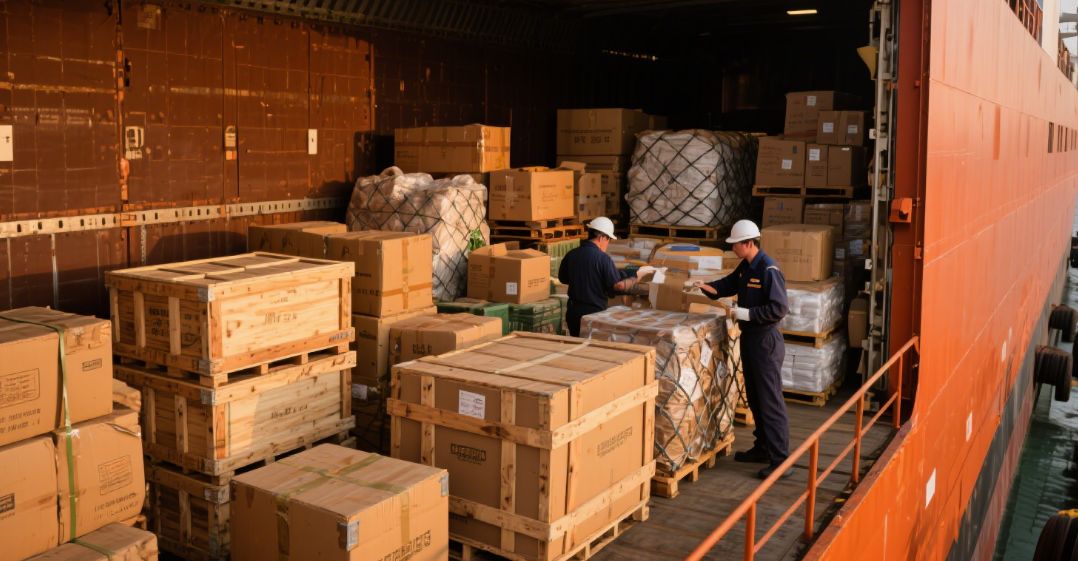Why Choose LCL Shipping for Your Small Batch Needs from China to the USA?
Release time:
2025-07-18
Why Choose LCL Shipping for Your Small Batch Needs from China to the USA?
In the ever-evolving landscape of international trade, choosing the right shipping method is critical for businesses looking to import goods. **LCL shipping**, or Less than Container Load shipping, has emerged as a preferred logistics solution, particularly for small batch needs from China to the USA. This article delves into the numerous advantages of LCL shipping, guiding businesses in making informed decisions that align with their logistics requirements.
Understanding LCL Shipping: A Brief Overview
LCL shipping involves consolidating multiple shipments from various exporters into a single container. This method allows businesses that do not have enough cargo to fill an entire container to share space, making it a **cost-effective** choice for small batch shipping.
The Mechanics of LCL Shipping
When you choose LCL shipping, your goods are transported along with those of other companies. Shipping lines charge based on the volume or weight of your cargo, which means you only pay for the space you occupy. This system significantly reduces costs and allows flexibility for businesses with varying shipping needs.
How LCL Shipping Works
1. **Cargo Preparation**: Goods are packed and labeled according to shipping regulations.
2. **Consolidation**: Your cargo is combined with other shipments, forming a consolidated load.
3. **Transportation**: The consolidated container is shipped to the destination port.
4. **Deconsolidation**: Upon arrival, the container is opened, and individual shipments are sorted for delivery.
Key Benefits of LCL Shipping for Small Batch Needs
Understanding the benefits of LCL shipping can significantly impact your logistics strategy. Below are some of the most compelling reasons to consider this shipping method for your small batch needs.
1. Cost-Effectiveness
One of the primary advantages of LCL shipping is its cost-effectiveness. Because you share the container space with other shippers, you only pay for the portion that your cargo occupies. This aspect is particularly beneficial for small businesses or startups that may not have the budget for full container loads.
2. Flexibility in Shipping
LCL shipping offers unparalleled flexibility. It allows businesses to ship smaller quantities without having to wait until they have enough goods to fill a container. This flexibility is crucial for businesses that need to respond quickly to market demands or seasonal fluctuations.
3. Reduced Risk of Overhead Costs
By opting for LCL shipping, businesses can reduce various overhead costs associated with full container loads, such as storage and inventory management. Smaller shipments can help maintain optimal stock levels without the financial strain of purchasing large quantities.
4. Improved Cash Flow Management
For many businesses, cash flow can be a significant concern. LCL shipping enables companies to invest in smaller quantities of inventory, allowing for better cash flow management. This approach supports smoother operations and reduces the risk of excess inventory.
5. Eco-Friendly Shipping Solution
LCL shipping is often seen as a more sustainable option. By sharing container space, businesses contribute to lower carbon emissions per unit of goods transported. This eco-friendly approach aligns with the growing trend of sustainable business practices.
Considerations When Choosing LCL Shipping
While LCL shipping offers numerous benefits, it is essential to consider specific factors before making a decision.
1. Transit Times
LCL shipments may take longer to arrive compared to full container loads due to the consolidation and deconsolidation processes. Businesses should weigh the importance of delivery speed against the cost savings.
2. Cargo Safety and Handling
Shipping multiple shipments in one container can raise concerns about cargo safety. It is vital to ensure that your cargo is well-packaged to withstand potential handling issues during transit.
3. Documentation and Customs Clearance
Navigating customs regulations can be complex, particularly for LCL shipments. Proper documentation is crucial to ensure a smooth clearance process. Working with experienced freight forwarders can help mitigate potential issues.
Steps to Successfully Utilize LCL Shipping
To effectively leverage LCL shipping for your small batch needs, follow these steps:
1. Choose the Right Freight Forwarder
Selecting a reputable freight forwarder is critical. Look for a provider experienced in LCL shipping with a solid track record in handling customs and documentation.
2. Prepare Your Cargo Properly
Ensure that your goods are packed securely and labeled correctly. This preparation will reduce the risk of damage during transit and facilitate easier customs clearance.
3. Understand Your Shipping Schedule
Be aware of the shipping schedules and plan accordingly. While LCL shipping can be flexible, it is essential to estimate transit times accurately to align with your inventory needs.
4. Monitor Your Shipment
Utilize tracking systems provided by your freight forwarder to monitor your shipment's progress. This transparency will help you stay informed and manage customer expectations effectively.
Common Misconceptions About LCL Shipping
Despite its advantages, some misconceptions may deter businesses from adopting LCL shipping.
1. LCL Shipping is Always More Expensive
While LCL shipments can be more expensive than full container loads on a per-cubic-meter basis, the overall cost benefits often outweigh the initial expense, particularly for small quantities.
2. LCL Shipping is Less Reliable
Many businesses believe that LCL shipments are less reliable due to the consolidation process. However, reputable freight forwarders ensure that shipments are carefully managed, maintaining high reliability.
3. LCL Shipping is Only for Small Businesses
While LCL shipping is ideal for small businesses, larger companies can also benefit, especially when testing new products or managing fluctuating inventory levels.
FAQs About LCL Shipping
1. What is the difference between LCL and FCL shipping?
LCL (Less than Container Load) shipping involves sharing container space with other shipments, while FCL (Full Container Load) shipping requires one shipper to fill an entire container. LCL is suitable for smaller shipments, whereas FCL is more economical for larger loads.
2. How is the cost calculated for LCL shipping?
The cost for LCL shipping is typically calculated based on the volume (cubic meters) or weight of your cargo. The shipping line will charge based on the greater of the two measurements.
3. How long does LCL shipping take from China to the USA?
Transit times for LCL shipping can vary based on the destination port and the shipping line's schedule. Generally, it can take anywhere from 20 to 45 days, depending on various factors.
4. Is LCL shipping safe for fragile items?
Yes, LCL shipping can be safe for fragile items, provided they are appropriately packaged and labeled. It is advisable to discuss any specific handling requirements with your freight forwarder.
5. Can I track my LCL shipment?
Most freight forwarders provide tracking services for LCL shipments, allowing you to monitor your cargo's progress throughout the shipping process.
Conclusion
Choosing LCL shipping for your small batch needs from China to the USA can offer a host of benefits, including cost savings, flexibility, and reduced overhead. By understanding the intricacies of LCL shipping and considering key factors, businesses can optimize their logistics strategy effectively. With careful planning and the right partnerships, LCL shipping can become a powerful tool in your supply chain arsenal, helping you respond more effectively to market demands while keeping operational costs low.










